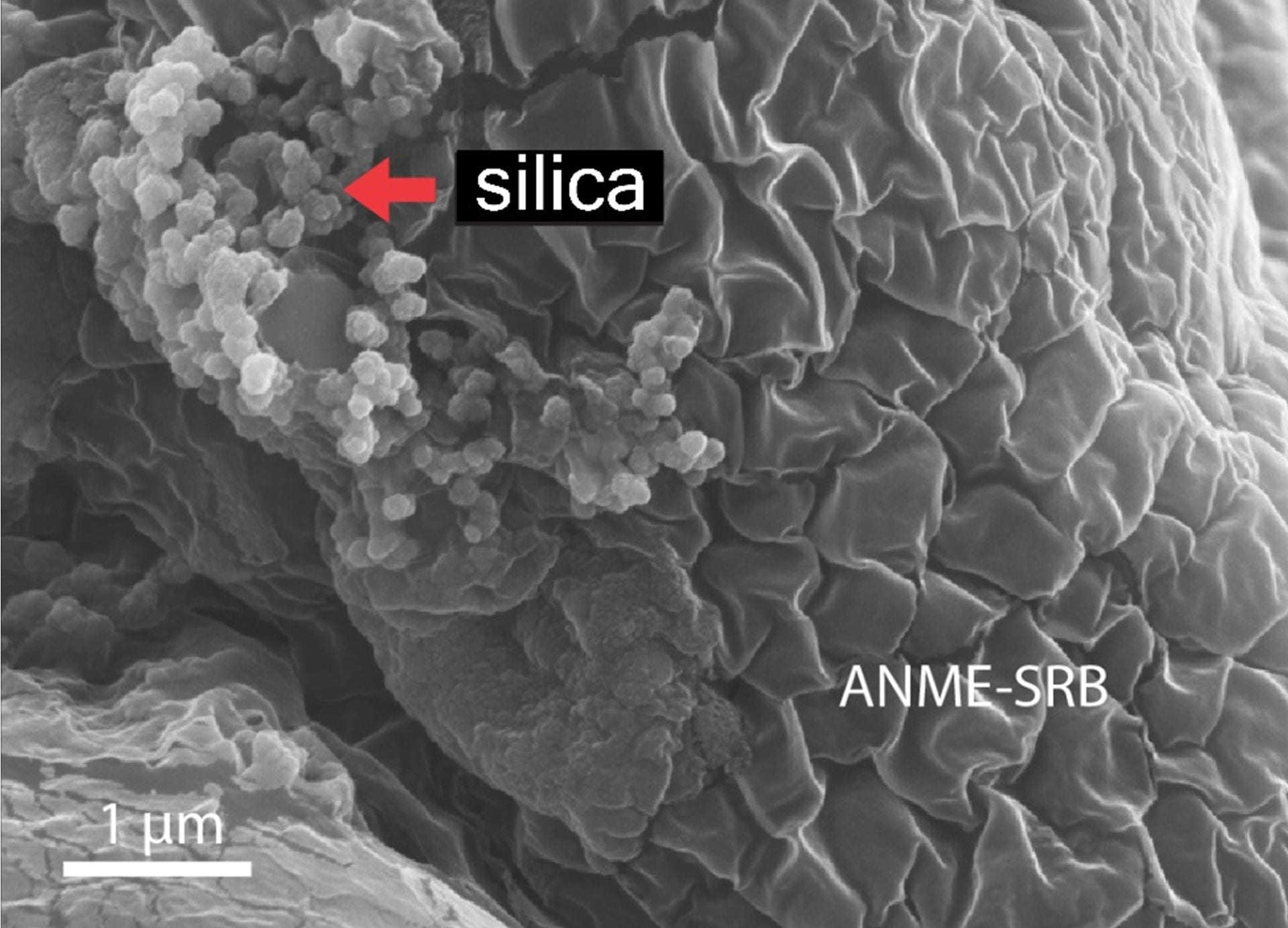TITLE: Microbially induced precipitation of silica by anaerobic methane-oxidizing consortia and implications for microbial fossil preservation
—ABSTRACT: Authigenic carbonate minerals can preserve biosignatures of microbial anaerobic oxidation of methane (AOM) in the rock record. It is not currently known whether the microorganisms that mediate sulfate-coupled AOM—often occurring as multicelled consortia of anaerobic methanotrophic archaea (ANME) and sulfate-reducing bacteria (SRB)—are preserved as microfossils. Electron microscopy of ANME-SRB consortia in methane seep sediments has shown that these microorganisms can be associated with silicate minerals such as clays [Chen et al., Sci. Rep. 4, 1–9 (2014)], but the biogenicity of these phases, their geochemical composition, and their potential preservation in the rock record is poorly constrained. Long-term laboratory AOM enrichment cultures in sediment-free artificial seawater [Yu et al., Appl. Environ. Microbiol. 88, e02109-21 (2022)] resulted in precipitation of amorphous silicate particles (~200 nm) within clusters of exopolymer-rich AOM consortia from media undersaturated with respect to silica, suggestive of a microbially mediated process. The use of techniques like correlative fluorescence in situ hybridization (FISH), scanning electron microscopy with energy dispersive X-ray spectroscopy (SEM-EDS), and nanoscale secondary ion mass spectrometry (nanoSIMS) on AOM consortia from methane seep authigenic carbonates and sediments further revealed that they are enveloped in a silica-rich phase similar to the mineral phase on ANME-SRB consortia in enrichment cultures. Like in cyanobacteria [Moore et al., Geology 48, 862–866 (2020)], the Si-rich phases on ANME-SRB consortia identified here may enhance their preservation as microfossils. The morphology of these silica-rich precipitates, consistent with amorphous-type clay-like spheroids formed within organic assemblages, provides an additional mineralogical signature that may assist in the search for structural remnants of microbial consortia in rocks which formed in methane-rich environments from Earth and other planetary bodies. [Link to Article]
